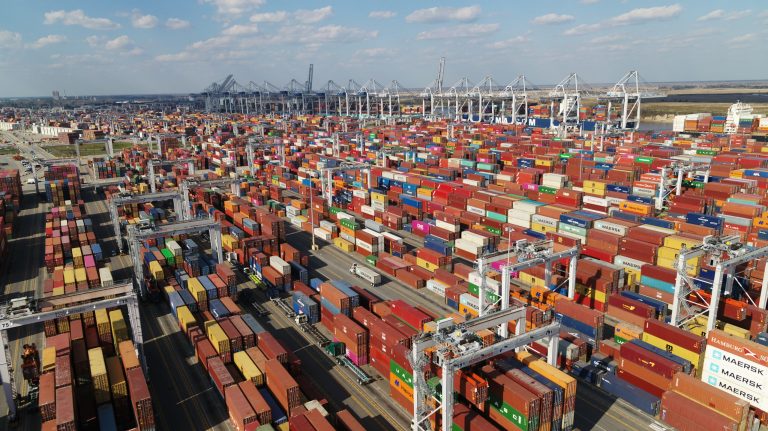
Shippers Turn to West Coast and Air Freight Options Due to Ongoing ILA Strike
4 months ago
Shippers Turn to West Coast and Air Freight Options Due to Ongoing ILA Strike

The highly anticipated ILA port worker union strike across U.S. East Coast and Gulf ports commenced Monday night at 12:01 AM after the ILA and U.S. Maritime Alliance (USMX) failed to reach an agreement by the deadline.
In the days leading up to the strike, the White House and other government officials urged both parties to resume negotiations, with USMX leadership reportedly meeting with the Biden administration late last week.
In a last-ditch effort, USMX proposed a 50% wage increase, which the ILA rejected in favor of a 77% increase. Last week, USMX filed an unfair labor practice charge against the ILA with the National Labor Relations Board. If accepted, this charge could compel the ILA to return to the negotiating table, although the approval process may take several weeks.
As the strike approached, logistics providers ramped up efforts to mitigate its impact. Trucking companies rushed to remove containers from affected ports before the shutdown. Carriers like ONE, Hapag-Lloyd, and MSC adjusted their schedules, omitting East Coast port calls that were too close to the strike deadline and rerouting imports to other East Coast ports or even Mexico and Canada. However, there have been no reports of significant diversions to alternative East Coast ports or the West Coast thus far.
Some carriers have ceased accepting new bookings for refrigerated containers bound for the East Coast and have imposed considerable surcharges on new dry container bookings for October, likely pushing rates higher even with the ports closed. Many carriers announced that they would pause detention and demurrage charges for containers stranded in yards during the strike, with the Federal Maritime Commission (FMC) warning against unfair D&D fees.
While alternative ports in Mexico and Canada face capacity constraints that prevent a complete shift of affected volumes, a separate three-day labor strike at two of the Port of Montreal's five container terminals has exacerbated the situation.
It remains uncertain whether the ILA will pursue a prolonged, large-scale strike or opt for targeted actions, such as strikes at specific ports on designated days or slowdowns across various locations. Some observers believe that the economic repercussions of a long-term full-scale strike, along with political pressure on the Biden administration, may lead the ILA to prefer more limited measures, thereby reducing the chances of government intervention.
Currently, approximately 40 vessels are scheduled to arrive at the Port of New York/New Jersey this week, with most likely to face delays if the ports shut down. The resulting congestion and backlogs from the strike will impact shippers with containers already at the ports or on incoming vessels, further driving up freight rates, as reflected in recent carrier surcharges.
Demand has already begun to shift to the West Coast in recent months, and a prolonged East Coast shutdown would only intensify this trend. An increase in demand or redirected vessels to the West Coast could lead to higher rates there, despite a projected overall decline in import container volumes to the U.S. for October.
Ports in Los Angeles/Long Beach and the Pacific Northwest report smooth operations and readiness for a potential surge in volumes. However, if the strike continues and demand shifts significantly to the West Coast, it could overwhelm these ports, causing congestion that would further delay operations and tie up capacity, ultimately driving up rates.
An extended strike on the East Coast would have repercussions for capacity and empty container shortages in Europe, while significant congestion on the West Coast could affect equipment availability at Asian origin hubs, impacting shipping routes within Asia as well as Asia-Europe connections.
Anticipation of the strike has already prompted some shippers, particularly those dealing with perishable goods, to transition from ocean freight to air cargo. While Freightos Air Index data for Latin America-North America and North America-Europe rates have yet to show an increase in air cargo prices, Europe-North America rates have risen by 4% to $1.73/kg since early September.
In the past week, air rates from China to North America climbed by 9% to $5.91/kg. This increase may signal the onset of the air peak season, with prices already surpassing typical peak levels due to the ongoing surge in e-commerce volumes. While Chinese hubs are not reporting operational slowdowns at this time, congestion is beginning to build in Singapore and Vietnam, and the Philippines is facing severe backlogs.
Source: Container News